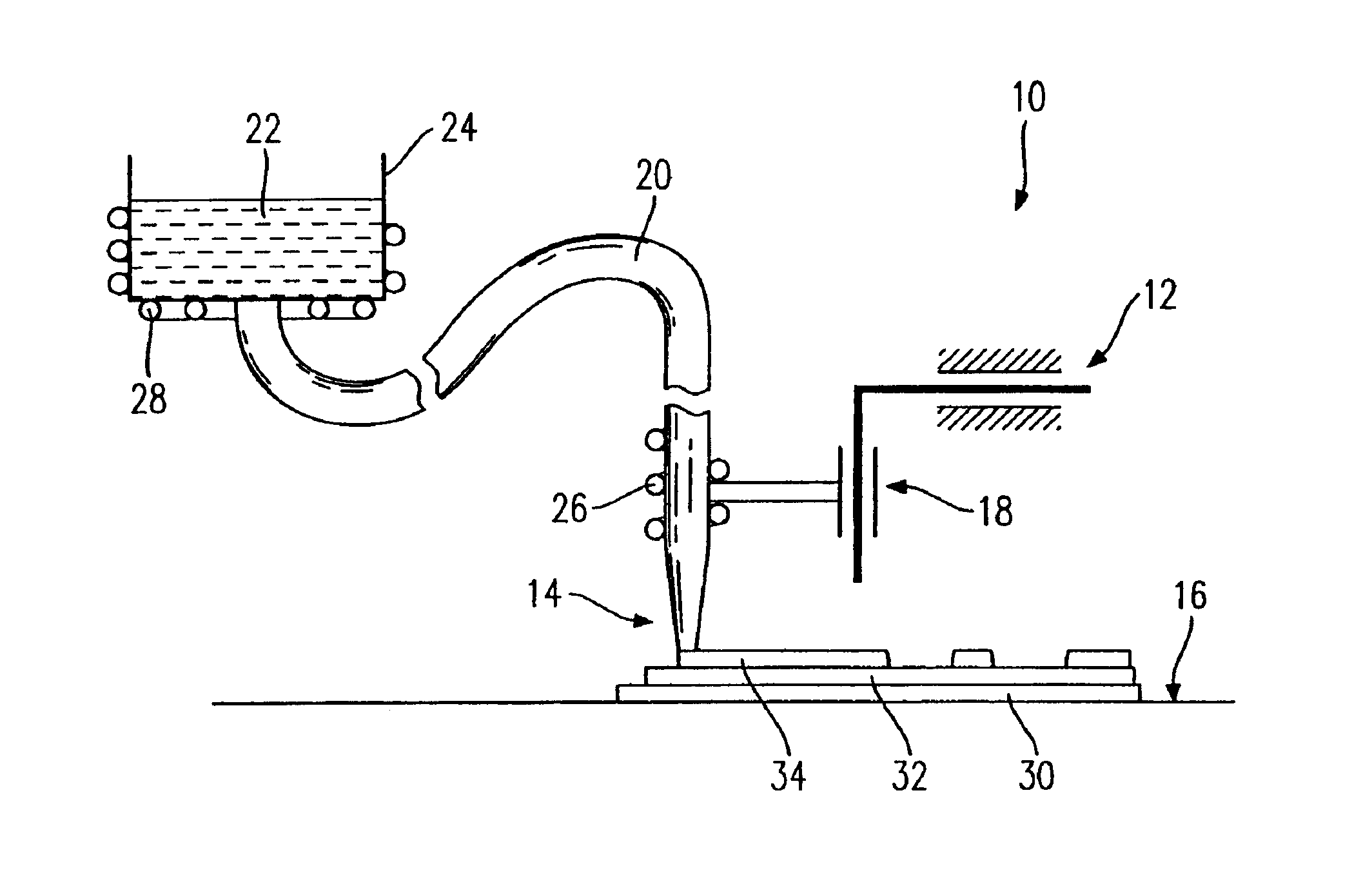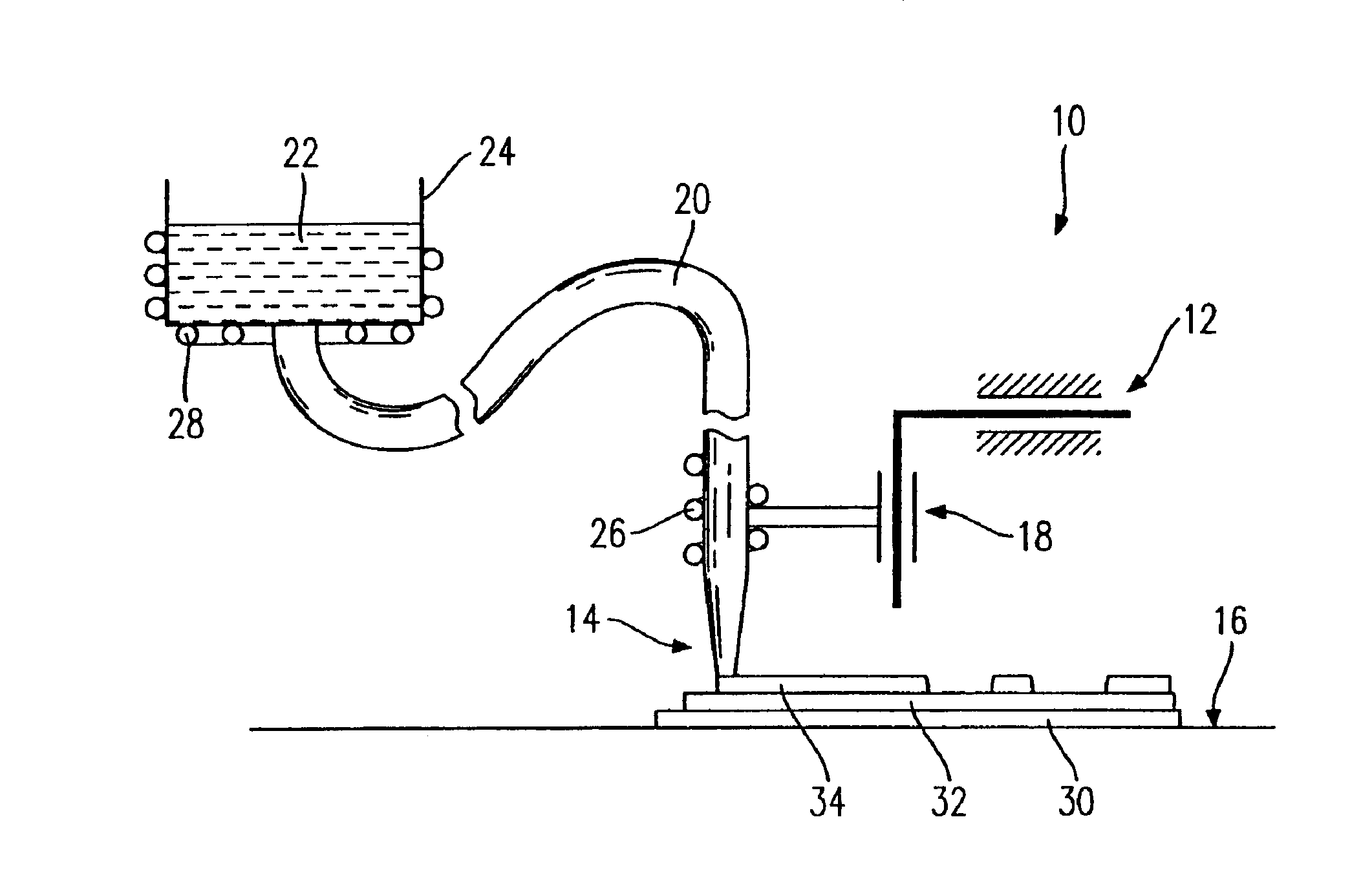Desktop process for producing dental products by means of 3-dimensional plotting
a technology of 3-dimensional plotting and desktop process, which is applied in dentistry, additive manufacturing with solid and fluid, moulds, etc., can solve the problems of requiring a high degree of effort to produce the finished product, the palette of available materials has clearly grown, and the creation of hollow spaces between powder materials cannot be foreclosed, so as to reduce the retention of plaque thereon and achieve good polishing characteristics.
- Summary
- Abstract
- Description
- Claims
- Application Information
AI Technical Summary
Benefits of technology
Problems solved by technology
Method used
Image
Examples
example 1
Treatment to Completion of an Inlay Comprised of a Light Hardenable, Low Viscosity Dental-Like Filling Material
[0037]The inlay was fabricated with a conventional low viscosity, light hardenable film (Tetric Flow available from Ivoclar-Vivadent AG). To fabricate the inlay, data concerning the cavity was transferred into the computer controlled plotting unit. The fabrication of the inlay then followed by computer controlled cutting away of micro points of the material disposed on a metal oversurface. The hardening of the deployed materials was accomplished by a light source disposed parallel to the nozzle emitting light in a wavelength range of 400 to 500 nm. The construction of the cavity was conducted in a manner such that a micro point was plotted every 10 seconds. In the interval between the plots of every two successive points, the outlet opening of the nozzle was closed and the above-noted light source was activated to effect the hardening.
example 2
[0038]The fabrication of the inlay of Example 1 above was repeated with the use of another conventional dental like film (Heliomolar Flow, Tetra Chroma and Ariston AT available from Ivoclar-Vivadent AG).
example 3
The Fabrication of an Inlay Comprised of a Light Hardenable, Short Length Glass Fiber Filled Monomer Mixture
[0039]A short length glass fiber filled monomer mixture combined in the hereafter described combination was used to fabricate the inlay. The following data is given as percent by weight.[0040]30% short length glass fibers (fabricated by Schott) having an average length of 115 mm[0041]29% Bisphenol—A—Diglycidyldimethacrylate (Bis-GMA)[0042]26% 7,7,9-Trimethyl-4,13-dioxo-3,14-dioxa-5,12-diazahexadecane-I,16-dioxy-di-methacrylate[0043]14% Triethyleneglycoldimethacrylate[0044]1% low molecular stabilizers, additives, and initiators
[0045]The fabrication of the short length glass fiber filled monomer mixture included a working in of the short length glass fibers into the monomer mixture by means of a moving tool.
[0046]The inlay was thereafter constructed by use of the computer controlled plotting unit to conduct a computer controlled cutting away of micro cords of the selected materi...
PUM
| Property | Measurement | Unit |
|---|---|---|
| diameter | aaaaa | aaaaa |
| diameter | aaaaa | aaaaa |
| diameter | aaaaa | aaaaa |
Abstract
Description
Claims
Application Information
 Login to View More
Login to View More - R&D
- Intellectual Property
- Life Sciences
- Materials
- Tech Scout
- Unparalleled Data Quality
- Higher Quality Content
- 60% Fewer Hallucinations
Browse by: Latest US Patents, China's latest patents, Technical Efficacy Thesaurus, Application Domain, Technology Topic, Popular Technical Reports.
© 2025 PatSnap. All rights reserved.Legal|Privacy policy|Modern Slavery Act Transparency Statement|Sitemap|About US| Contact US: help@patsnap.com


